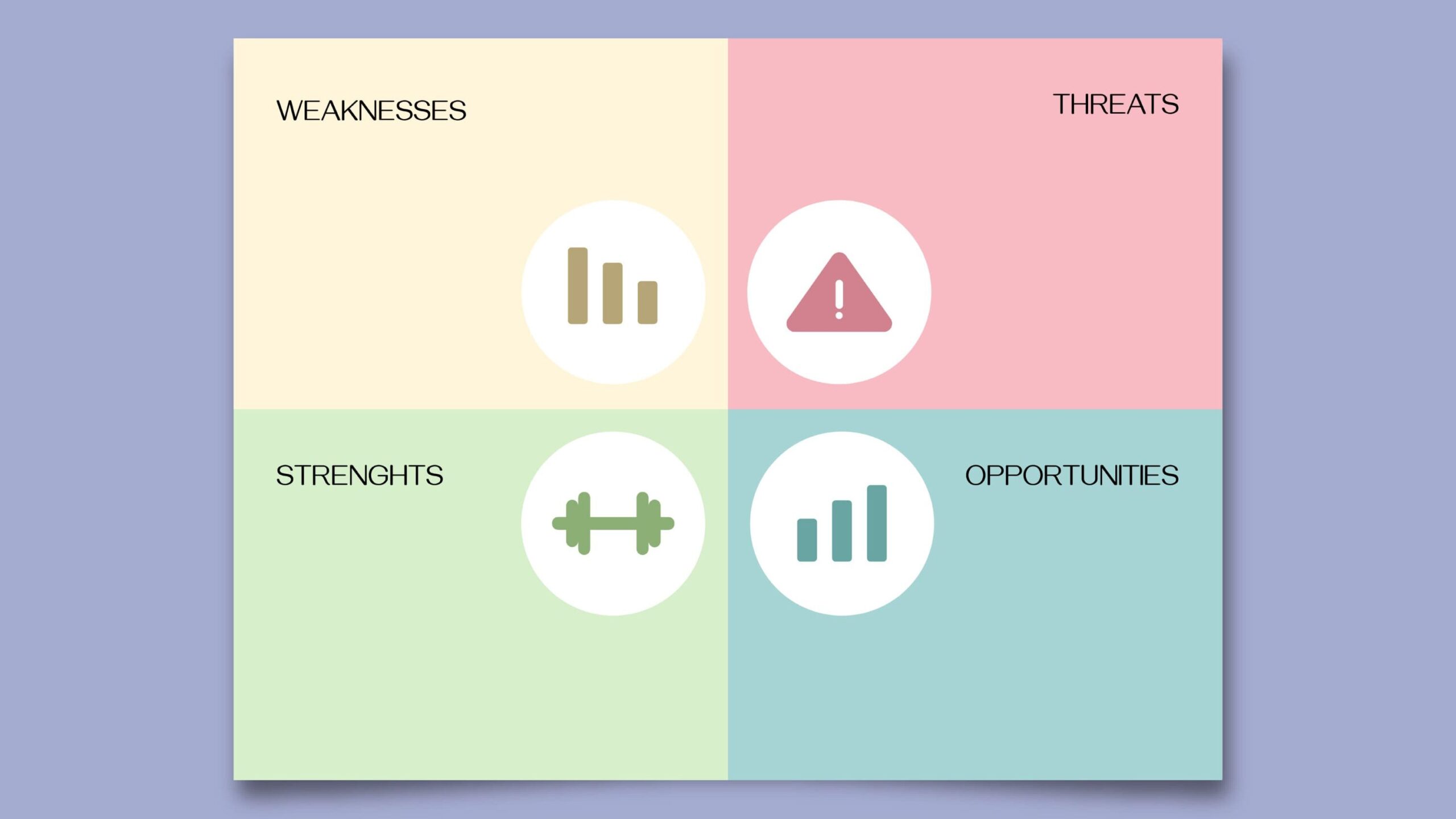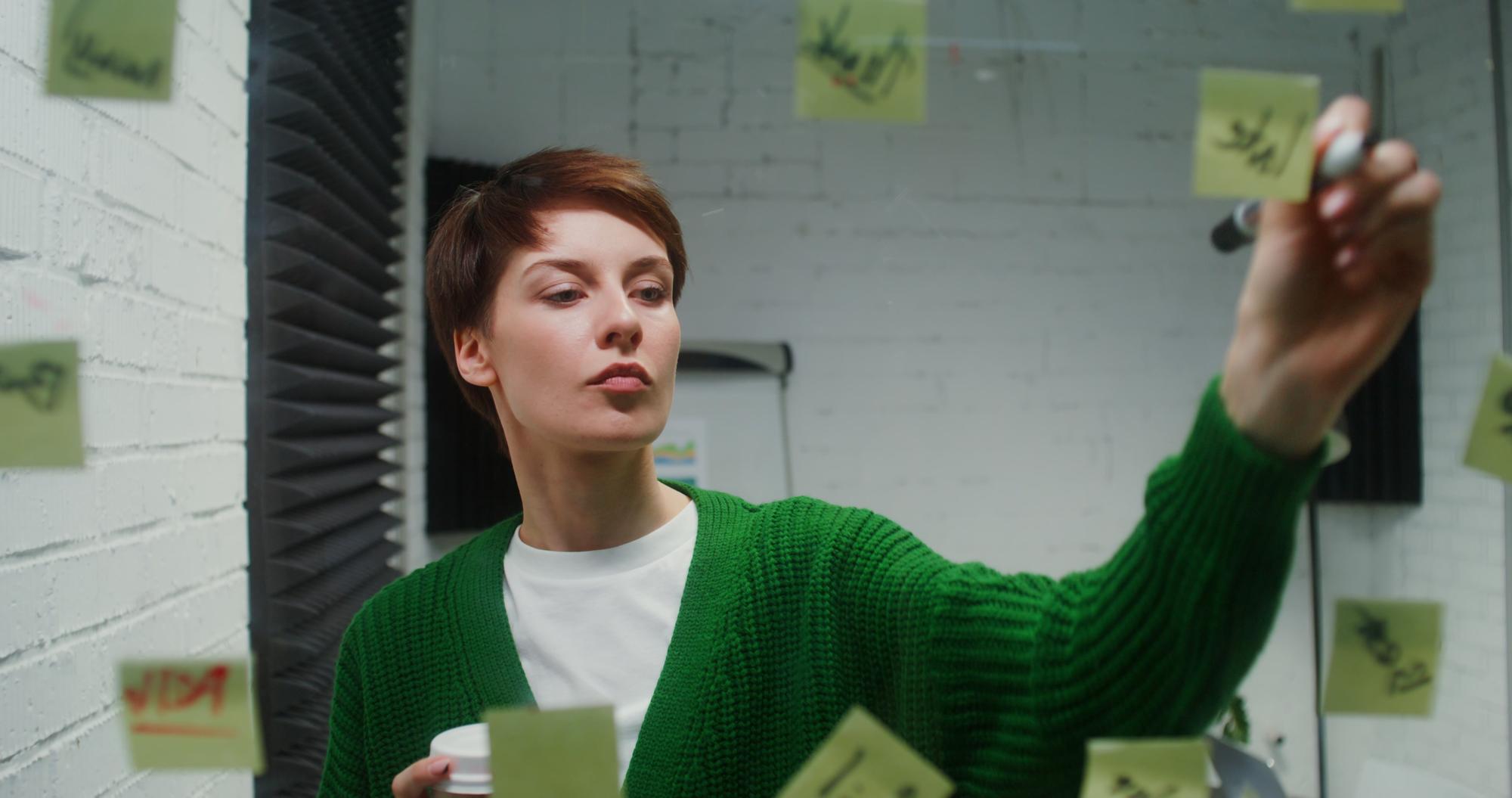Not all sprint retrospectives feel productive. Sometimes, they turn into the same old conversations without real action. Other times, people hold back honest feedback, or worse—they tune out completely.
But here’s the thing: when done right, sprint retrospectives are one of the most powerful tools for team growth. They help teams pinpoint what’s working, fix what’s not, and continuously improve—sprint after sprint. In fact, the best Agile teams use retrospectives to refine processes, boost collaboration, and deliver better results every single time.
So why do so many teams struggle with them? Repetitive discussions, unclear takeaways, and lack of follow-through can make retrospectives feel like just another meeting. That’s where this guide comes in.
In this post, we’ll walk you through creative, practical retrospective ideas that keep your team engaged and actually lead to change. Whether your retros have lost their spark or you’re looking for fresh ways to shake things up, you’ll find proven techniques to make your retrospectives more effective, actionable, and—dare we say—actually fun.
Let’s get started!
The Anatomy of an Effective Sprint Retrospective
Sprint retrospectives can either be game-changers for your team or just another meeting that eats up valuable time. Done right, they boost productivity, morale, and team alignment. Done wrong? They become an endless cycle of complaints with no real progress. So how do you ensure your retrospectives actually drive improvement?
Also, if you’re looking to supercharge your Agile process, check out our Agile Project Management Guide for more strategies to optimize your workflow
Common Pitfalls (And How to Fix Them)
🚨 Lack of Psychological Safety
If team members feel like they can’t be honest without consequences, they’ll hold back real feedback. No honesty = no real improvement.
✅ Fix: Set the tone that all feedback is welcome. Encourage open discussions and remind the team that retrospectives are about improvement, not blame.
🚨 No Clear Focus
Without a structured approach, retrospectives turn into rambling discussions with no direction.
✅ Fix: Stick to a framework like Start, Stop, Continue or 4Ls (Liked, Learned, Lacked, Longed For) to keep conversations productive.
🚨 No Follow-Through on Action Items
Ever feel like the same issues come up in every retrospective? That’s a sign that action items aren’t being implemented.
✅ Fix: Assign ownership and deadlines for each action item. At the next retro, check in on progress. No accountability = no change.
Using a structured approach like Start, Stop, Continue or 4Ls ensures retrospectives stay productive. If you’re interested in a broader look at structured Agile workflows, you might find our Scrum Project Management Guide very helpful
How to Run a High-Impact Retrospective in 30 Minutes
⏳ 0-5 min: Quick check-in (one-word reflection or mood board).
📝 5-15 min: Discuss “Start, Stop, Continue” or another structured format.
🔍 15-25 min: Prioritize action items (dot voting, impact vs. effort matrix).
✅ 25-30 min: Assign ownership and deadlines.
At the end of the day, a great sprint retrospective isn’t just about talking—it’s about taking action. If your team isn’t seeing measurable improvement, something needs to change. Keep it focused, keep it honest, and always track results.
Time-boxing discussions and prioritizing action items are key to keeping retros efficient. Need more time-saving techniques? Don’t miss our guide on Reducing Duration of Project Management.
Quick Overview of 10 Retrospective Ideas for Agile Teams
| Retrospective Technique | Focus Area | Key Questions | Best For | Key Benefits |
| DAKI (Drop, Add, Keep, Improve) | Process optimization & workflow improvement | What should we drop, add, keep, or improve? | Teams looking to optimize workflows & eliminate inefficiencies | Encourages actionable changes, balances improvements with wins |
| Energy Levels | Task engagement & team energy levels | What tasks energize us? What drains us? How can we recharge? | Preventing burnout & improving work engagement | Prevents burnout, boosts morale, improves productivity |
| Lean Coffee | Open discussion & team-driven agenda | What topics should we discuss? What are our key priorities? | Teams that struggle with structured retrospectives | Keeps retros focused, gives everyone a voice, promotes engagement |
| 4Ls (Liked, Learned, Lacked, Longed For) | Reflection on achievements, gaps, and learning | What did we like? What did we learn? What was lacking? What do we long for? | Encouraging well-rounded team reflection & insights | Fast, effective, and ensures continuous learning |
| Starfish | Evaluating actions to start, stop, or adjust | What should we start, stop, keep doing, do more of, or do less of? | Balancing positive reinforcement & improvement | Helps teams break down actions into meaningful categories |
| Sailboat | Visualizing progress, risks, and goals | What is pushing us forward? What is slowing us down? What risks do we face? Where are we heading? | Visual thinkers & teams needing a metaphor-driven approach | Provides clear visualization of obstacles & driving forces |
| Mad, Sad, Glad | Emotional intelligence & team motivation | What made us mad, sad, or glad? | Teams focused on emotional well-being & motivation | Surfaces emotional concerns affecting productivity |
| Meta-Retrospective | External feedback & stakeholder insights | What feedback do external teams/stakeholders have? | Cross-functional teams & organizations needing external insights | Reveals blind spots, ensures stakeholder alignment |
| KALM (Keep, Add, More, Less) | Fine-tuning team practices | What should we keep, add, do more of, or do less of? | Teams seeking to refine and optimize workflows | Simple yet effective for ongoing team improvement |
| SWOT Analysis | Strategic planning & risk assessment | What are our strengths, weaknesses, opportunities, and threats? | Teams looking at long-term strategy & competitive positioning | Encourages strategic thinking & proactive problem-solving |
#1. DAKI (Drop, Add, Keep, Improve)
🔴 Drop – What’s slowing us down?
Every team has processes, tools, or habits that no longer serve them. Maybe there’s a recurring meeting that eats up time without adding value. Or maybe a complicated approval process is slowing down sprint velocity. This step is all about cutting the clutter and removing what’s dragging the team down.
➕ Add – What’s missing?
What could help the team work faster, collaborate better, or reduce friction? Maybe you need a better way to track progress (Mirorim), or maybe more frequent check-ins would prevent roadblocks before they happen. This step is where the team brainstorms and experiments with new solutions to improve workflow.
✔️ Keep – What’s working really well?
It’s easy to focus on problems, but what about your wins? Maybe your daily stand-ups are efficient, or your peer feedback system is working great. This step ensures that the team recognizes and continues the habits that contribute to success.
🔧 Improve – What needs tweaking?
Some things don’t need to be dropped—they just need a tune-up. Maybe your code reviews are effective but take too long, or your sprint planning meetings run over time. This step helps the team refine existing processes to make them even better.
Why DAKI Works So Well
✅ It’s Simple & Actionable – No overcomplicated frameworks. Just four clear steps to guide discussions.
✅ It Keeps Retros Productive – Instead of vague conversations, DAKI helps teams walk away with a concrete plan.
✅ It Balances Positivity & Change – It doesn’t just focus on problems—it also highlights what’s working and how to build on it.
#2. Energy Levels
Let’s be real—some tasks fuel us with energy and excitement, while others drag us down and make us want to nap at our desks. The Energy Levels retrospective helps teams figure out which tasks fire them up and which ones suck the life out of them so they can make smart changes.
Why does this matter? Because low energy leads to burnout, frustration, and lower productivity. In fact, according to Gallup, highly engaged teams are 21% more productive and have 59% less turnover. If you want a team that actually enjoys their work and performs at their best, paying attention to energy levels is a game-changer.
How to Run an Energy Levels Retrospective
1️⃣ Energy Boosts – What tasks energize you?
🔹 Which parts of your job make you feel motivated and excited?
🔹 Do you love problem-solving, creative brainstorming, coding deep dives, or fast-moving sprints?
🔹 These are the things you want to prioritize and do more of.
2️⃣ Energy Drains – What’s exhausting or frustrating?
🚩 Which tasks leave you feeling drained and unmotivated?
🚩 Are long meetings, last-minute scope changes, or repetitive manual work slowing you down?
🚩 These are the things you want to eliminate, automate, or improve.
3️⃣ Recharging Strategies – How can we fix the energy-draining stuff?
✅ Can we automate repetitive tasks?
✅ Should we cut down unnecessary meetings?
✅ Could we distribute work more effectively to avoid burnout?
Why This Retrospective Works So Well
✔️ Prevents Burnout – If too many tasks drain the team’s energy, it’s only a matter of time before motivation tanks.
✔️ Boosts Productivity – When teams work on things they enjoy, they perform faster and better.
✔️ Creates a Happier Work Environment – When people feel energized instead of exhausted, they collaborate better and bring more creativity and enthusiasm to the table.
#3. Lean Coffee

ئome retrospectives feel like a chore. The same people talk, the same issues get brushed aside, and before you know it, you’re stuck in another meeting that could have been an email. If that sounds familiar, it’s time to shake things up with Lean Coffee.
Lean Coffee is a structured but agenda-free retrospective where the team decides what to discuss, not just the facilitator. No pre-planned topics, no rigid structure—just real conversations about what actually matters.
The best part? It’s democratic, efficient, and keeps discussions on track.
How to Run a Lean Coffee Retrospective (Step-by-Step)
☕ Step 1: Set Up a Simple Board
You’ll need three columns:
- To Discuss (team-submitted topics)
- Discussing (the current topic in focus)
- Discussed (topics you’ve covered)
Use a whiteboard, sticky notes, or digital tools like Mirorim to organize ideas.
✍️ Step 2: Gather Topics
Each team member writes down topics they want to discuss. No limits, no restrictions. If it’s on their mind, it’s worth talking about.
📌 Step 3: Vote on What Matters Most
Each team member gets 3-5 votes to place on topics they care about. The highest-voted issues go first, ensuring the most relevant discussions.
⏳ Step 4: Time-Boxed Conversations
Each topic gets 5-10 minutes max. Once time runs out, the team votes: continue or move on? This keeps the meeting focused and fast-paced.
✅ Step 5: Capture Action Items
Discussions are great, but change only happens if there’s follow-through. Assign action items, owners, and deadlines so ideas turn into real improvements.
Why Lean Coffee Works (And Why Teams Love It)
💡 No More Wasted Meeting Time – You only discuss what matters, and time limits prevent long-winded tangents.
💡 Empowers Every Team Member – The team drives the conversation, not just managers or facilitators.
💡 Keeps Engagement High – People actually care because they’re discussing their real pain points and ideas.
💡 Encourages Continuous Improvement – If the same issues keep popping up, it’s a sign that a deeper change is needed.
Traditional retrospectives often waste time on irrelevant discussions. Lean Coffee keeps things focused. Want to improve time efficiency even further? Check out Complete Project Management Guide for 28X Savings on Your Next Project.
#4. 4Ls (Liked, Learned, Lacked, Longed For)

Let’s be honest—some retrospectives feel like a repeat of the last one, with no real change happening. If your team is going through the motions but not seeing improvements, it’s time to switch things up. The 4Ls retrospective is a simple but powerful way to get to the heart of what’s working, what’s not, and what your team actually needs to do better.
Why the 4Ls Retrospective Works
Teams that consistently reflect and act on their retrospectives improve productivity by 24% and boost overall project quality by 42%. The 4Ls method ensures retrospectives aren’t just a meeting—they become a tool for real improvement.
It works by breaking things down into four clear areas:
✅ Liked – What went well? What do we want to keep doing?
✅ Learned – What new insights, skills, or takeaways did we gain?
✅ Lacked – What was missing? What slowed us down or caused friction?
✅ Longed For – What do we wish we had that would make things easier or better?
How to Run a 4Ls Retrospective (Step-by-Step)
📝 Step 1: Set Up (5 min) – Create a board with four columns (Liked, Learned, Lacked, Longed For). Use sticky notes or a digital tool like Miro or Mural.
💭 Step 2: Individual Reflection (10 min) – Team members write their thoughts for each category. No filtering—just honest input.
💬 Step 3: Group Discussion (20 min) – Go through the notes one category at a time. Look for trends and themes.
🚀 Step 4: Action Planning (15 min) – Convert discussion points into clear, actionable next steps. Assign owners and deadlines.
✅ Step 5: Wrap-Up & Follow-Through (5 min) – Summarize key takeaways. Make sure someone tracks progress so the same issues don’t come up again next sprint.
Why You Should Try It
✔ It’s Fast & Effective – Keeps discussions focused and actionable.
✔ Encourages Honest Feedback – Gives everyone a voice without turning into a complaint session.
✔ Leads to Real Change – Every discussion ends with action items, so things actually improve.
If the same “Lacked” or “Longed For” items keep showing up, it’s a red flag that something deeper needs to change. Track trends over multiple retrospectives to spot ongoing issues.
#5. Starfish
Not all retrospectives lead to real change. Some feel like we’re repeating the same points every sprint without making progress. If that sounds familiar, the Starfish Retrospective might be exactly what your team needs.
Unlike traditional retros that just focus on what worked and what didn’t, the Starfish model gives teams a clearer, more structured way to reflect. It breaks things down into five categories:
✅ Start Doing – What’s missing from our process that could help us work better?
❌ Stop Doing – What’s slowing us down or adding unnecessary stress?
🔁 Keep Doing – What’s working well that we should continue?
📈 Do More Of – What’s effective but isn’t being used enough?
🔽 Do Less Of – What’s important but taking too much time or effort?
Why Use the Starfish Retrospective?
Teams that actively fine-tune their workflow improve efficiency by 25% and reduce wasted effort by 30% . The Starfish method helps teams spot inefficiencies, build on strengths, and create an action plan that actually moves the needle.
How to Run a Starfish Retrospective
📝 Step 1: Set Up a Board (5 min) – Draw five sections (Start, Stop, Keep, More, Less) on a whiteboard or use a digital tool.
💡 Step 2: Team Reflection (10 min) – Everyone adds their thoughts to each section. No overthinking—just quick, honest input.
💬 Step 3: Group Discussion (20-30 min) – Go through each section, group similar ideas, and identify key themes.
🚀 Step 4: Action Planning (15 min) – Turn ideas into concrete action items with owners and deadlines. No vague “let’s improve X” statements—make it specific and trackable.
✅ Step 5: Follow-Up – Review action items in the next retro. If the same issues keep coming up, it’s a sign something deeper needs to change.
Why This Works So Well
✔ It’s More Structured & Balanced – Unlike some retros that focus too much on problems, this method ensures wins are recognized, too.
✔ It Helps Eliminate Small Time Wasters – You’d be surprised how small inefficiencies add up over a sprint—this format helps spot and fix them.
✔ It Drives Action, Not Just Talk – Every retro should end with clear action steps—otherwise, why have one at all?
🚀 Pro Tip for Agile Teams & HR Leaders: If the same “Stop Doing” or “Do Less Of” themes keep showing up, don’t ignore them. That’s a red flag that bigger process changes are needed.
#6. Sailboat

Ever feel like your retrospectives are just going in circles, discussing the same roadblocks without real change?
If your team is stuck in the same patterns, it’s time to switch gears with the Sailboat Retrospective—a simple yet powerful way to visualize progress, identify obstacles, and create an action plan that actually moves the needle.
Why Use the Sailboat Retrospective?
Teams that use structured retrospectives like the Sailboat method resolve issues 23% faster and improve sprint predictability by 35%. The key? It forces teams to look at both their driving forces and roadblocks in one clear picture.
The metaphor is simple:
🚀 Wind: What’s pushing us forward?
⚓ Anchors: What’s slowing us down?
🪨 Rocks: What risks could sink us?
🏝️ Island: Where are we trying to go?
This visual approach makes it easy for teams to see what’s working, what’s not, and—most importantly—what needs to change.
How to Run a Sailboat Retrospective (30-Minute Format)
1️⃣ Set Up the Board (5 min) – Draw a sailboat with wind, anchors, rocks, and an island. Use a whiteboard, sticky notes, or a digital tool like Mirorim.
2️⃣ Team Brainstorm (10 min) – Everyone writes down what they think belongs in each category. No overthinking—just quick, honest input.
3️⃣ Group Discussion (10 min) – Go through each section together. Spot themes, prioritize issues, and highlight key opportunities.
4️⃣ Action Plan (5 min) – Decide on 2-3 top priorities and assign owners & deadlines. No vague takeaways—make it specific and trackable.
Why This Works So Well
✔ It’s Visual & Engaging – Teams can see the big picture instead of just talking in circles.
✔ It Highlights Both Strengths & Weaknesses – Unlike traditional retros, this method balances positive momentum with problem-solving.
✔ It Drives Real Change – Every retro should end with clear action steps—otherwise, what’s the point?
If the same “anchors” keep showing up sprint after sprint, that’s not just a one-time issue—it’s a process failure that needs deeper attention.
If your retrospectives aren’t leading to real action, the Sailboat method keeps things clear, focused, and results-driven. Try it, track your team’s progress, and make sure every sprint moves you closer to success. 🏝️🚀
#7. Mad, Sad, Glad
Retrospectives can sometimes feel repetitive. The same issues keep popping up, and instead of solving them, the team just moves on to the next sprint. That’s where the Mad, Sad, Glad retrospective comes in.
It helps teams go beyond surface-level discussions and tap into the emotions behind their work—the frustrations, the disappointments, and the wins that keep them motivated.
Why Use Mad, Sad, Glad?
Ignoring team morale is a silent productivity killer. Studies show that teams with high emotional intelligence collaborate 32% more effectively and experience 22% fewer conflicts. When teams take the time to express what’s making them mad (frustrated), sad (disappointed), and glad (motivated), they gain clarity on what’s holding them back and what’s pushing them forward.
This isn’t just about venting emotions—it’s about turning team insights into real improvements.
How to Run a High-Impact Mad, Sad, Glad Retrospective
📝 Step 1: Set the Stage (5 min) – Set up a board with three columns: Mad, Sad, and Glad. Use a physical board or a digital tool like Mirorim.
💡 Step 2: Individual Reflection (5-10 min) – Team members write down their thoughts for each category on sticky notes. Be honest and specific—no sugarcoating.
💬 Step 3: Group Discussion (10-20 min) – Go through each category, spot patterns, and prioritize the biggest themes.
🚀 Step 4: Action Planning (5-10 min) – Turn key discussion points into actionable tasks. Assign owners and deadlines to ensure real follow-through.
Why This Works So Well
✔ It Gets to the Root of Issues – Instead of just identifying problems, teams understand the emotions behind them, leading to deeper problem-solving.
✔ It Balances Frustrations with Wins – Unlike some retros that only focus on negatives, this one celebrates what’s working, too.
✔ It Drives Real Change – Every retro should end with clear action steps—otherwise, what’s the point?
If the same “Mad” or “Sad” themes keep appearing, it’s not just a one-time issue—it’s a systemic problem that needs deeper attention.
If your retrospectives aren’t leading to real improvements, it’s time to dig deeper. Use Mad, Sad, Glad to uncover what’s frustrating your team, build on what’s working, and make every sprint better than the last.
#8. Meta-Retrospective
If your team only reviews its own work, you’re missing half the picture. You might be delivering on time, but are you meeting customer expectations? Are your workflows actually aligned with other departments? The truth is, 95% of new products fail because they don’t meet customer needs.
That’s where the Meta-Retrospective comes in. Instead of just talking among yourselves, you bring in external voices—stakeholders, customers, and cross-functional teams—to expose blind spots, improve collaboration, and refine your processes.
How to Run a Meta-Retrospective
🔹 Step 1: Set the Context (0-5 min) – Explain why external feedback matters and how it can help the team build smarter, faster, and better.
🔹 Step 2: Gather Insights (5-15 min) – Invite stakeholders, customers, or other teams to share their feedback on:
- Collaboration gaps – Are we working effectively with other teams?
- Process bottlenecks – Where do things slow down?
- Product/Service alignment – Are we actually solving the right problems?
🔹 Step 3: Identify Key Themes (15-30 min) – Organize feedback into categories like Process Fixes, Product Enhancements, and Communication Gaps.
🔹 Step 4: Build an Action Plan (30-45 min) – Turn insights into specific next steps with clear owners and deadlines.
Why This Works So Well
✔ Uncovers Hidden Issues – External teams see problems your team is too close to notice.
✔ Breaks Silos & Improves Collaboration – Helps teams work together instead of in isolation.
✔ Prevents Costly Mistakes – Stakeholder feedback helps catch misalignments before they become expensive rework.
Create a Feedback Backlog to track external insights and review it in future retrospectives. If the same issue keeps coming up, it’s time to fix the process, not just the symptoms.
If your retrospectives only involve your own team, you’re missing critical feedback that could make or break your project. Run a Meta-Retrospective this sprint—bring in stakeholders, customers, or cross-functional leads—and see how much clearer your path to success becomes.
Retrospectives shouldn’t happen in isolation. Bringing in external perspectives prevents blind spots. To explore stakeholder alignment further, read Who Should Project Managers Interact With During Integration.
#9. KALM (Keep, Add, More, Less)
Agile teams move fast, and if you’re not constantly fine-tuning your processes, you risk falling into bad habits that slow everyone down. That’s where the KALM retrospective comes in—it’s a structured but flexible way to evaluate what’s working, what’s not, and what needs to change so your team can stay efficient and engaged.
What is the KALM Retrospective?
KALM stands for:
✅ Keep – What’s working well? What should we continue doing?
➕ Add – What new ideas, tools, or processes could improve our workflow?
📈 More – What’s already working but could be done more frequently or with greater impact?
📉 Less – What’s taking too much time or not adding enough value?
Unlike traditional retros that only focus on what’s broken, KALM helps balance reflection with action—reinforcing good habits while eliminating waste.
How to Run a KALM Retrospective (30-Minute Format)
📝 Step 1: Set Up a Board (5 min) – Divide a whiteboard or digital tool into four sections: Keep, Add, More, Less.
💡 Step 2: Team Brainstorm (10 min) – Everyone writes their ideas for each category on sticky notes. Be honest, specific, and constructive.
💬 Step 3: Group Discussion (10 min) – Review each section, identify patterns, and discuss key takeaways.
🚀 Step 4: Action Planning (5 min) – Turn insights into real action by assigning owners and deadlines for each improvement. No vague “we should do this” ideas—make it trackable.
Why KALM Works So Well
✔ It’s Simple & Effective – No complicated process, just clear, actionable insights.
✔ Encourages Balanced Reflection – Not just about fixing issues, but building on strengths too.
✔ Prevents Process Fatigue – Helps trim unnecessary steps so your team stays focused on what really matters.
Track KALM insights over multiple sprints. If the same “Less” items keep showing up, it’s a red flag that a deeper process change is needed.
If your team is constantly busy but not necessarily productive, the KALM retrospective helps cut the clutter, double down on what works, and keep improving every sprint. Try it in your next retrospective and see how much sharper and more efficient your team becomes.
#10. SWOT Analysis

Agile teams move fast, and it’s easy to focus on sprint-to-sprint improvements without stepping back to see the bigger picture. That’s where a SWOT Analysis comes in. This method goes beyond the usual retrospective discussion by helping teams strategically assess their strengths, weaknesses, opportunities, and threats.
Why Use a SWOT Analysis in Agile?
🔹 Strengths – What are we great at? What gives us a competitive edge?
🔹 Weaknesses – What slows us down? Where do we struggle?
🔹 Opportunities – What external trends, tools, or processes can we leverage?
🔹 Threats – What risks or external factors could impact our success?
A well-run SWOT retrospective helps teams think more strategically—it’s not just about fixing small process issues but also about identifying long-term success factors and risks. In fact, teams that regularly conduct SWOT analyses make 26% faster strategic decisions.
How to Run a SWOT Retrospective (30-Minute Format)
📝 Step 1: Set the Stage (5 min) – Explain why SWOT matters and how it helps teams stay ahead of risks while maximizing strengths.
💡 Step 2: Team Brainstorm (10 min) – Have team members list their thoughts under each SWOT category. Use a whiteboard or a digital tool like Miro or Mural.
💬 Step 3: Prioritize & Discuss (10 min) – Identify the most pressing strengths, weaknesses, opportunities, and threats that need immediate attention.
🚀 Step 4: Action Plan (5 min) – Turn key insights into real action steps—assign owners and deadlines to ensure progress.
Why SWOT Works So Well
✔ Encourages Big-Picture Thinking – Helps teams step out of sprint mode and plan for long-term success.
✔ Uncovers Hidden Risks – Instead of reacting to problems, teams proactively address threats before they become blockers.
✔ Promotes Strategic Decision-Making – Ensures that process improvements align with overall business goals.
Track SWOT insights over multiple retrospectives—if the same weaknesses and threats keep appearing, it’s time to fix the root cause, not just the symptoms.
If your team is only focused on sprint-to-sprint issues, you’re missing bigger opportunities and risks. A SWOT Analysis keeps your team proactive, not reactive—so you’re not just fixing small problems, but setting yourself up for long-term success. Try it in your next retrospective and see how much sharper and more strategic your team becomes.
Looking beyond the current sprint and assessing long-term risks makes teams more resilient. If strategic planning interests you, our guide on Critical Path Project Management Guide is a must-read.
Conslusion
Sprint retrospectives shouldn’t feel like just another meeting. When done right, they spark real conversations, uncover hidden roadblocks, and help teams grow stronger together. The key? Keep them fresh, engaging, and focused on action.
Maybe your team thrives on structured approaches like SWOT Analysis. Or maybe they prefer something more free-flowing, like Lean Coffee. Whatever the case, mix it up, try new formats, and find what truly works.
At the end of the day, retrospectives aren’t about looking back—they’re about moving forward. So don’t let them become a routine checkbox. Make them meaningful, make them impactful, and most importantly—make them count!

